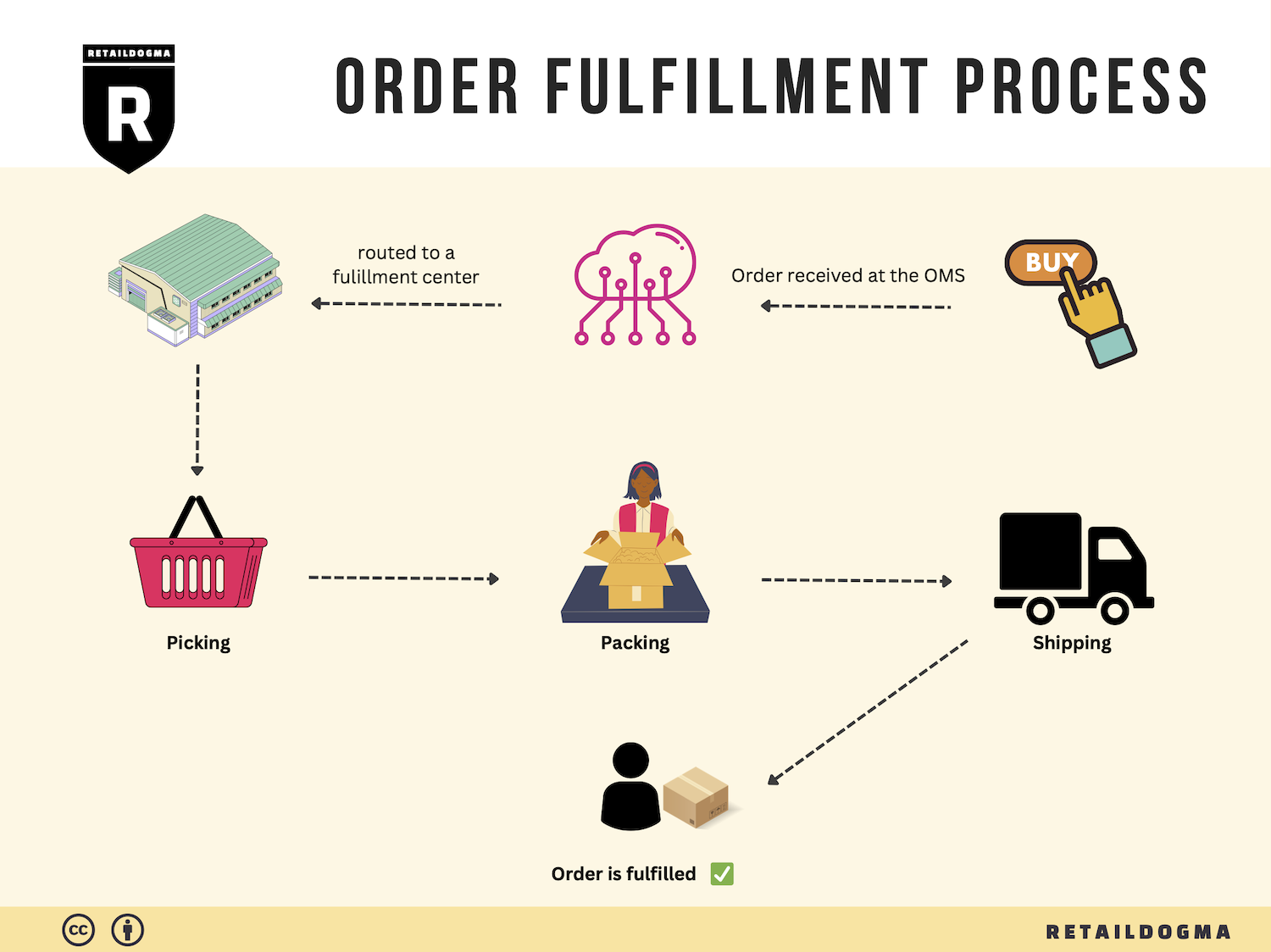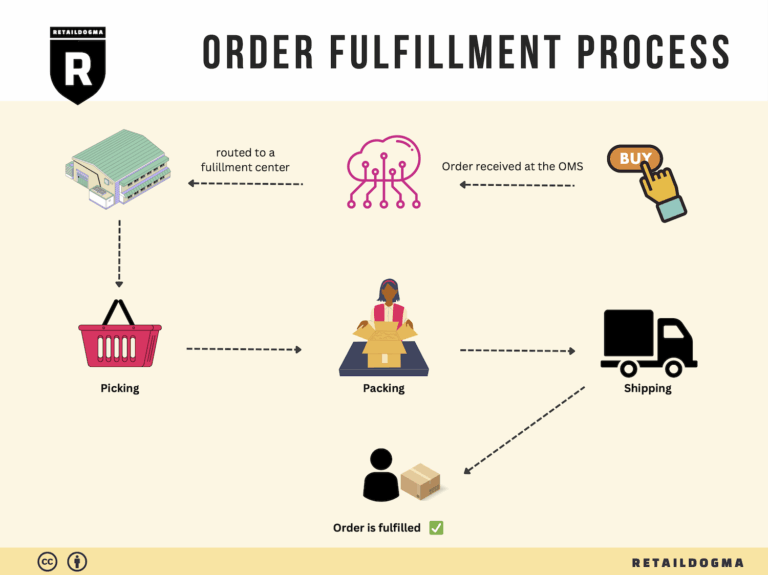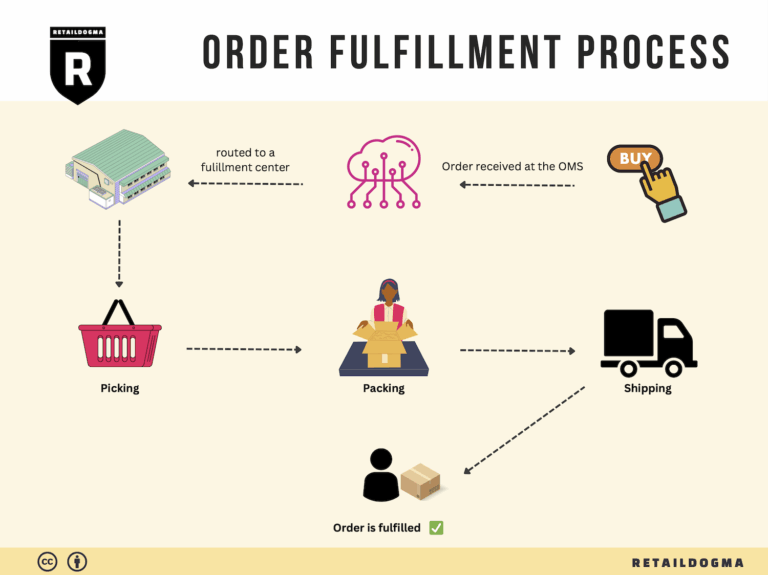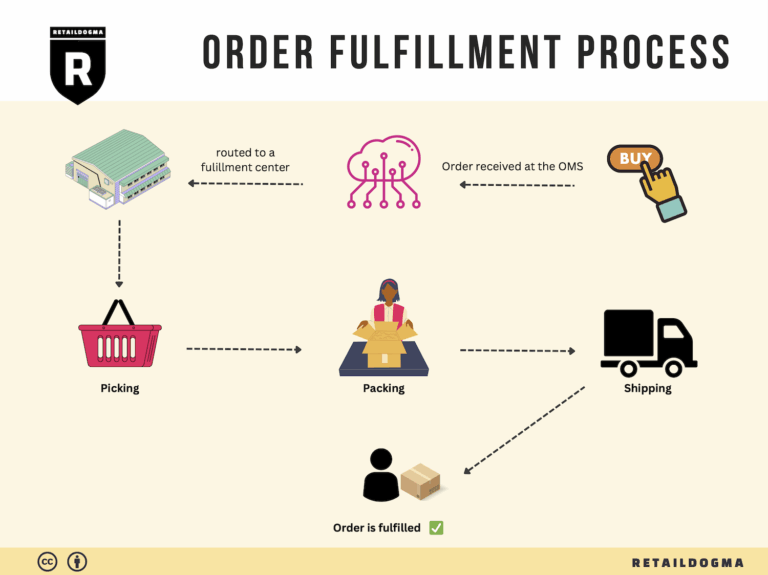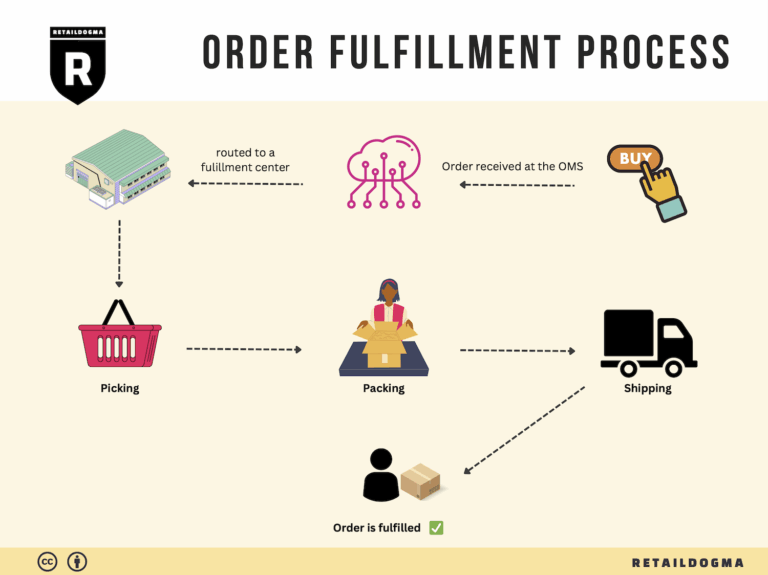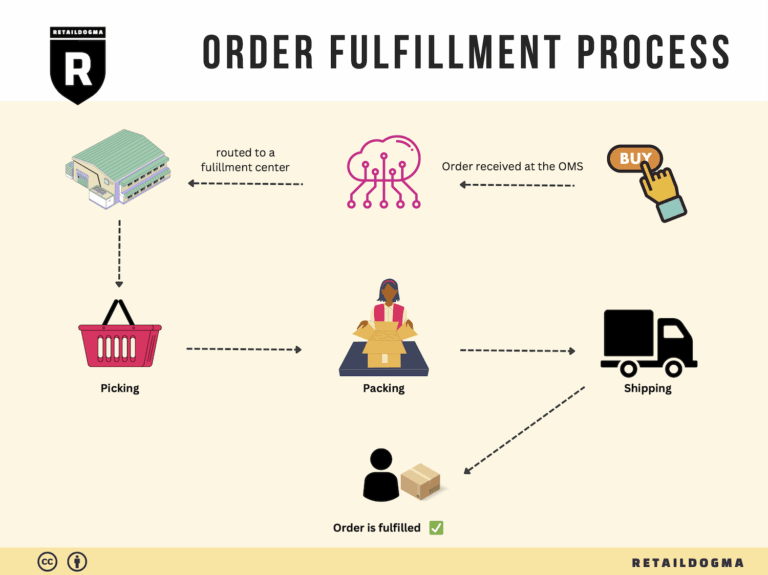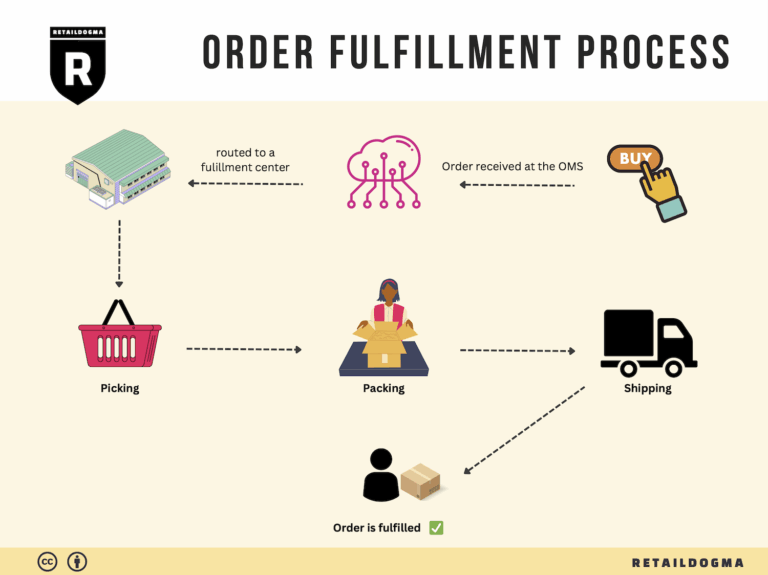What Is A Fulfillment Center? A Complete Guide (2025)
What is E-commerce Fulfillment? An Introduction for Growing Businesses
Understanding E-commerce Fulfillment: A Crucial Component for Growth
For many growing e-commerce businesses, the journey from receiving an order to delivering it to the customer can often feel overwhelming. As sales increase, so does the complexity of managing inventory, packing orders, and shipping them efficiently. This is where e-commerce fulfillment comes into play—a critical process that ensures your products reach customers quickly and reliably.
At its core, e-commerce fulfillment is the complete process of getting a product into the hands of a customer. This encompasses everything from inventory management and order processing to packing and shipping. As businesses scale, the challenges associated with fulfillment can become significant, including managing logistics, maintaining inventory accuracy, and meeting customer expectations for fast delivery.
This guide aims to demystify the world of e-commerce fulfillment for business owners, operations managers, and entrepreneurs looking to scale their logistics. We will explore various fulfillment models, including Third-Party Logistics (3PL) and Fulfillment by Amazon (FBA), helping you understand which may be the best fit for your business needs.
Key Components Covered in This Guide
-
Fulfillment Models: We will discuss the differences between in-house fulfillment, 3PL, and FBA, detailing the benefits and drawbacks of each model to help you make informed decisions.
-
Core Services: You’ll learn about essential fulfillment services such as warehousing, inventory management, order processing, packing, shipping, and returns management. Understanding these services will empower you to choose a fulfillment partner that aligns with your operational goals.
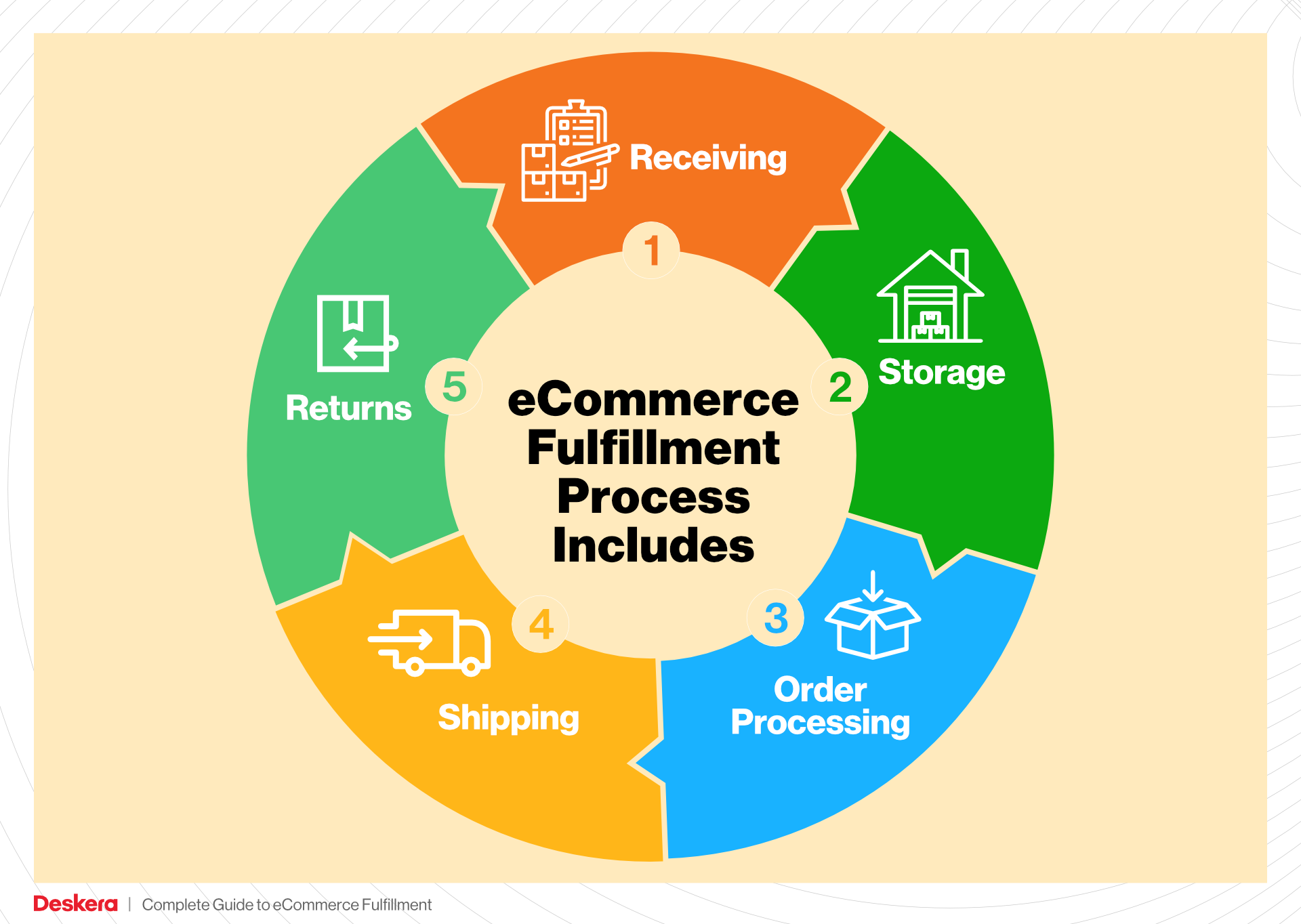
-
Choosing the Right Partner: Selecting the right fulfillment partner is crucial for your business’s success. We will provide practical tips on evaluating potential partners based on their capabilities, technology, location, and customer service.
-
Pricing Considerations: Fulfillment costs can vary widely depending on the services you choose and the complexity of your operations. We will outline the key factors that influence pricing, enabling you to budget effectively and avoid unexpected expenses.
Empowering Your Logistics Decisions
Ultimately, this guide aims to empower you to make smart, strategic decisions about your logistics. By understanding the intricacies of e-commerce fulfillment and knowing how to assess your options, you can streamline your operations, enhance customer satisfaction, and drive growth for your business. Whether you are just starting or looking to scale, mastering fulfillment is essential to thriving in the competitive e-commerce landscape.
What You’ll Learn In This Guide
- What is E-commerce Fulfillment? An Introduction for Growing Businesses
- The Order Fulfillment Process: From ‘Buy’ Button to Customer’s Door
- Comparing Fulfillment Models: In-House vs. 3PL vs. Dropshipping
- A Deep Dive into Amazon FBA: Pros, Cons, and Who It’s For
- Core Services Offered by Fulfillment Centers
- How to Choose a Fulfillment Partner: A 6-Point Checklist
- Understanding Fulfillment Pricing: A Breakdown of Common Fees
- Frequently Asked Questions (FAQs) about Fulfillment
- Conclusion: Is Outsourcing Fulfillment the Right Move for Your Business?
- Important Disclaimer
The Order Fulfillment Process: From ‘Buy’ Button to Customer’s Door
1. Receiving Inventory
The order fulfillment process begins with receiving inventory at the fulfillment center. This step involves the physical arrival of products into the warehouse, where they are checked against purchase orders to ensure accuracy. The importance of this step cannot be overstated; it establishes the foundation for effective inventory management and order accuracy.
Key tasks include unloading shipments, inspecting goods for damage, and verifying quantities. Each item is assigned a Stock Keeping Unit (SKU), which serves as a unique identifier for tracking purposes. Proper receiving procedures help prevent discrepancies that could lead to stockouts or overstock situations, ensuring a smoother operation down the line.
2. Warehouse Storage
Once the inventory is received and verified, the next step is warehouse storage. This phase involves systematically organizing products within the fulfillment center to optimize space and accessibility. Efficient storage solutions are crucial because they directly impact the speed and efficiency of order fulfillment.
Items are categorized and stored based on various criteria such as size, weight, and demand frequency. Implementing a Warehouse Management System (WMS) can facilitate this process by helping to track inventory levels and locations in real-time. Proper storage ensures that products are easy to locate, which is vital for the subsequent picking process and overall operational efficiency.
3. Order Picking
Order picking is the next critical phase where items are selected from storage to fulfill customer orders. This step is pivotal as it directly affects the order accuracy and speed of delivery. Efficient picking processes can significantly enhance customer satisfaction and reduce operational costs.
To streamline this process, warehouses often utilize pick lists, which are generated based on customer orders. These lists guide employees to the correct locations within the warehouse, ensuring they gather the right products. Various picking methods, such as batch picking or zone picking, can be employed based on order volume and item variety. By optimizing the picking process, businesses can improve their throughput and reduce the time between order placement and shipment.
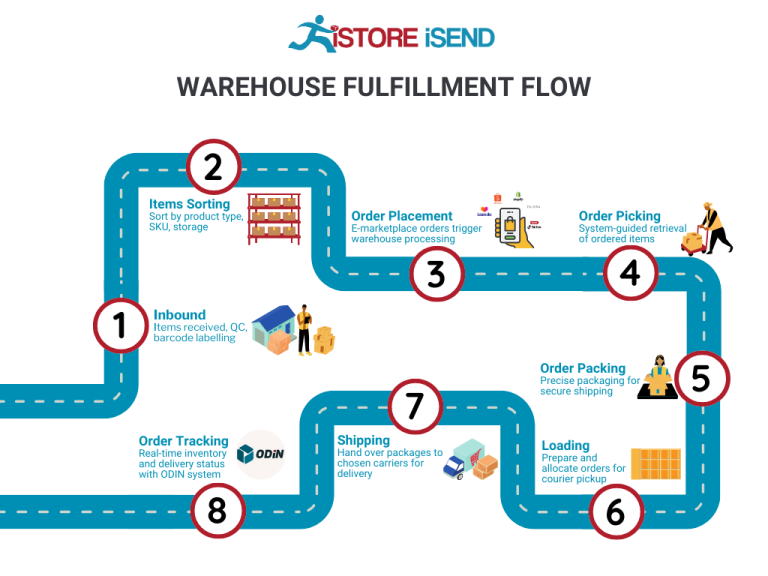
4. Order Packing
Once items have been picked, the next step is order packing. This phase involves carefully packaging the selected products to ensure they arrive at the customer’s location in perfect condition. Proper packing is vital not only for protecting the items during transit but also for optimizing shipping costs.
During packing, items are placed in appropriate packaging materials and boxes, often accompanied by packing slips that provide details about the order. Businesses should pay attention to dimensional weight pricing, which considers both the weight and size of packages when calculating shipping costs. Effective packing strategies minimize shipping expenses and enhance the overall customer experience by ensuring that products arrive safely and promptly.
5. Shipping & Delivery
The final step in the order fulfillment process is shipping and delivery. This phase involves the transfer of packed orders from the fulfillment center to the customer’s doorstep. Efficient shipping processes are crucial for meeting customer expectations regarding delivery speed and reliability.
Shipping options may vary, including standard ground shipping, expedited services, or same-day delivery, depending on the logistics capabilities of the fulfillment center. Partnering with reliable carriers and utilizing tracking systems allows customers to monitor their shipments in real-time, enhancing transparency and trust. The effectiveness of the shipping and delivery process can significantly influence customer satisfaction and repeat business.
By mastering these five steps in the order fulfillment process, e-commerce businesses can optimize their operations, enhance customer satisfaction, and ultimately scale their logistics capabilities effectively. Each phase plays a vital role in ensuring that products move seamlessly from the moment a customer clicks the ‘buy’ button until the package arrives at their door.
Comparing Fulfillment Models: In-House vs. 3PL vs. Dropshipping
Fulfillment Model Comparison
| Model | Who Handles Inventory | Best For (Business Stage) | Key Advantage | Key Disadvantage |
|---|---|---|---|---|
| In-House Fulfillment | Business (Own Warehouse) | Established businesses with consistent sales | Greater control over inventory and fulfillment process | High overhead costs and resource demands |
| Third-Party Logistics (3PL) | 3PL Provider | Growing businesses seeking scalability | Cost-effective, scalable, and allows focus on core business | Less control over inventory and fulfillment process |
| Dropshipping | Supplier | Startups and small businesses | Low upfront investment and reduced risk | Lower profit margins and reliance on supplier reliability |
In-House Fulfillment
In-house fulfillment refers to when a business manages its own warehousing and logistics operations. This model is often adopted by established e-commerce businesses that have a steady volume of orders and can justify the investment in a physical space and staff. The key advantage of in-house fulfillment is the level of control it offers. Businesses can customize their packing processes, maintain strict quality control, and manage inventory more effectively. Furthermore, with direct oversight, they can respond quickly to customer needs and adjust their operations as necessary.
However, the in-house model comes with significant challenges. The overhead costs can be substantial, including rent, utilities, staffing, and the purchase of equipment and technology. Additionally, managing logistics requires a dedicated team and can divert focus from core business activities such as marketing and product development. As a result, this model is best suited for businesses that are ready to invest heavily in their logistics operations and can afford to do so without jeopardizing other areas of their business.
Third-Party Logistics (3PL)
Third-party logistics (3PL) involves outsourcing fulfillment and logistics operations to a specialized service provider. This model is ideal for growing e-commerce businesses that are looking to scale their operations without the associated overhead costs of maintaining their own warehouse. 3PL providers can offer a range of services, including inventory management, warehousing, order fulfillment, and shipping. The primary advantage of this model is cost-effectiveness; businesses can leverage the 3PL’s existing infrastructure and expertise, freeing them up to focus on their core competencies.
The downside, however, is the loss of control over inventory and the fulfillment process. Businesses may face challenges in communication with their 3PL provider, which can lead to issues such as delays in shipping or inaccuracies in inventory levels. Additionally, the quality of service can vary significantly between providers, making it crucial for businesses to conduct thorough research and establish clear contracts. Nonetheless, for many businesses, especially those experiencing rapid growth, the benefits of partnering with a 3PL often outweigh the challenges.
Dropshipping
Dropshipping is a fulfillment model where a business sells products without holding any inventory. Instead, when a customer places an order, the business purchases the item from a third-party supplier who then ships it directly to the customer. This model is particularly appealing for startups and small businesses due to its low upfront investment; there is no need to purchase inventory or manage a warehouse. Additionally, dropshipping allows entrepreneurs to test new products with minimal financial risk.
However, dropshipping has notable disadvantages. Profit margins can be lower than in other fulfillment models due to the reliance on suppliers who set their own pricing. Businesses are also at the mercy of their suppliers regarding inventory levels and shipping times, which can lead to customer dissatisfaction if not managed effectively. Furthermore, the lack of control over the fulfillment process can result in inconsistencies in product quality and customer service. As such, while dropshipping can be a viable entry point for new e-commerce businesses, it requires careful management and strategic supplier selection to ensure long-term success.
Conclusion
Choosing the right fulfillment model is crucial for e-commerce businesses looking to scale. Each model—In-House Fulfillment, Third-Party Logistics, and Dropshipping—offers distinct advantages and disadvantages that can significantly impact operations and customer satisfaction. Businesses should assess their current stage, financial resources, and long-term goals when deciding which model to adopt. By understanding the nuances of each fulfillment approach, entrepreneurs can make informed decisions that align with their growth strategies and operational capabilities.

A Deep Dive into Amazon FBA: Pros, Cons, and Who It’s For
Understanding Fulfillment by Amazon (FBA)
Fulfillment by Amazon (FBA) is a service provided by Amazon that allows e-commerce sellers to store their products in Amazon’s fulfillment centers. Amazon then takes care of storage, packaging, and shipping of these products directly to customers. This service has become increasingly popular among e-commerce entrepreneurs, as it streamlines the logistics process, enabling sellers to focus on growing their businesses.
How FBA Works
When a seller enrolls in FBA, they send their inventory to Amazon’s fulfillment centers, where it is stored until sold. The process is straightforward:
- Create an Amazon Seller Account: To start using FBA, a seller must first set up an Amazon Seller account.
- Prepare and Ship Inventory: Sellers prepare their products according to Amazon’s guidelines and ship them to designated fulfillment centers.
- Product Listing: Sellers create product listings on Amazon, indicating that they are using FBA.
- Storage and Management: Amazon takes care of storing the inventory and managing it.
- Order Fulfillment: When a customer places an order, Amazon handles the picking, packing, and shipping of the product.
- Customer Service: Amazon also provides customer service and handles returns for FBA orders.
This model allows sellers to leverage Amazon’s extensive logistics network, making it easier to reach a large customer base.
Pros of FBA
1. Prime Eligibility
Products fulfilled by Amazon are eligible for Amazon Prime, which can significantly increase sales. Prime members often prefer products that come with the Prime badge due to the promise of fast and free shipping.
2. Customer Trust
Amazon is a recognized and trusted brand. By using FBA, sellers benefit from Amazon’s reputation, which can lead to higher conversion rates. Customers feel more secure purchasing items from sellers who utilize Amazon’s fulfillment services.
3. Multi-Channel Fulfillment
FBA is not limited to Amazon.com. Sellers can also use FBA to fulfill orders from other sales channels, such as their own websites or other marketplaces. This multi-channel fulfillment capability allows for greater flexibility and efficiency in managing inventory and orders.
4. Scalability
FBA allows sellers to scale their business without the need for significant investment in warehousing and logistics. As sales grow, sellers can easily send more inventory to Amazon without worrying about storage space or shipping logistics.
5. Automated Customer Service
Amazon handles customer inquiries and returns, freeing up sellers to focus on other aspects of their business. This can be particularly beneficial for small business owners or solo entrepreneurs.
Cons of FBA
1. High Fees
While FBA offers many advantages, it also comes with costs. Sellers must pay for storage fees (which can increase during peak seasons) and fulfillment fees per item sold. These fees can eat into profit margins, especially for low-cost items.
2. Strict Inventory Management Rules
Amazon has stringent inventory management policies, including limits on the number of units a seller can send to a fulfillment center. Sellers must also adhere to strict guidelines regarding product preparation and labeling.
3. Commingling Risks
FBA allows for commingling of inventory, meaning that products from different sellers may be stored together. This can lead to issues if a customer receives a defective item from another seller instead of the intended one. Sellers may face challenges in maintaining quality control.
4. Loss of Control
By using FBA, sellers relinquish some control over the fulfillment process. They depend on Amazon to manage inventory and handle customer service, which may not always align with the seller’s standards or expectations.
5. Complicated Returns Process
While Amazon handles returns, the process can be complicated for sellers who want to manage returns differently. Sellers must comply with Amazon’s return policies, which may not suit every business model.
Who is FBA Best For?
FBA is ideally suited for e-commerce businesses looking to scale quickly and efficiently without the burden of managing logistics. Here are some specific profiles that may benefit the most from FBA:
- Small to Medium-Sized Enterprises (SMEs): Businesses without the resources to manage their own fulfillment operations can leverage FBA to grow their customer base and sales volume.
- Online Retailers with High Volume: Sellers with a high volume of orders can benefit from Amazon’s logistics network, allowing them to meet customer demand efficiently.
- Brand Owners: Established brands looking to expand their reach through Amazon can benefit from the trust associated with FBA while maintaining brand visibility.
- Sellers with Seasonal Products: Businesses that experience seasonal spikes in demand can utilize FBA to manage inventory without long-term storage commitments.
- Entrepreneurs Focused on Growth: Sellers who prefer to concentrate on marketing and product development rather than logistics will find FBA to be a suitable option.
In conclusion, while FBA presents numerous advantages that can significantly simplify the fulfillment process and enhance customer experience, it is crucial for sellers to weigh these against the potential drawbacks. Understanding the nuances of FBA will help e-commerce business owners make informed decisions about whether this fulfillment method aligns with their operational goals and business strategy.
Core Services Offered by Fulfillment Centers
Inventory Management & Warehousing
Inventory management and warehousing are foundational services provided by fulfillment centers that enable e-commerce businesses to maintain optimal stock levels and manage their products efficiently. Fulfillment centers like Amazon’s RDU4 utilize advanced inventory management systems to track stock in real time, ensuring that businesses have visibility over their inventory levels, reorder points, and stock movements.
The benefits of effective inventory management are manifold. Firstly, it reduces the risk of stockouts, which can lead to lost sales and dissatisfied customers. By having a well-organized warehouse and a robust inventory tracking system, e-commerce businesses can also minimize excess inventory, reducing holding costs and freeing up capital for other investments. Additionally, fulfillment centers often provide scalable warehousing solutions, allowing businesses to easily adjust their storage needs based on seasonal demand fluctuations or growth in product lines. This flexibility is crucial for entrepreneurs looking to scale their operations without the burden of managing physical storage space directly.
Pick and Pack Services
Pick and pack services are integral to the fulfillment process, involving the selection (picking) of products from the warehouse based on customer orders and preparing (packing) them for shipment. Fulfillment centers employ sophisticated picking systems, which may include automated picking technologies and trained staff, to efficiently gather products from various locations within the warehouse.
The primary benefit of these services is speed and accuracy. By outsourcing pick and pack operations to a specialized fulfillment center, e-commerce businesses can ensure that orders are processed quickly and accurately, leading to higher customer satisfaction rates. Additionally, fulfillment centers utilize optimal packing techniques and materials, which reduce shipping costs and damage during transit. This not only enhances the customer experience but also contributes to lower operational costs for the e-commerce business.
Kitting and Assembly
Kitting and assembly services involve the grouping of individual items into ready-to-ship sets or kits, which can be particularly beneficial for e-commerce businesses offering bundled products or customized orders. Fulfillment centers have the capability to assemble products according to specific customer requests or promotional offers, streamlining the preparation process for complex orders.
The advantages of kitting and assembly services are significant. For one, they allow businesses to offer unique product combinations that can attract more customers and encourage higher sales volumes. Additionally, this service can significantly reduce the time and labor required for order fulfillment, enabling businesses to focus on core competencies like marketing and customer service. By leveraging kitting services, e-commerce businesses can also enhance inventory turnover, as bundled products often appeal more to consumers, leading to quicker sales.
Returns Management (Reverse Logistics)
Returns management, or reverse logistics, is a critical service offered by fulfillment centers that addresses the complexities associated with product returns. This process involves the handling of returned items, assessing their condition, restocking them if possible, and managing customer refunds or exchanges. Fulfillment centers implement efficient returns processes that streamline these operations, ensuring a smooth experience for both the business and its customers.
The benefits of effective returns management cannot be overstated. A well-managed returns process can significantly enhance customer loyalty, as consumers are more likely to shop with businesses that offer hassle-free return policies. Furthermore, fulfillment centers often analyze return data, providing valuable insights into product performance, customer preferences, and potential quality issues. This information can inform product development and inventory decisions, ultimately leading to improved profitability. Additionally, by outsourcing returns management to a fulfillment center, e-commerce businesses can save time and resources, allowing them to concentrate on growth strategies and customer engagement.
Conclusion
In summary, fulfillment centers like Amazon’s RDU4 provide a comprehensive suite of services that can greatly benefit e-commerce businesses. From inventory management and warehousing to pick and pack services, kitting and assembly, and returns management, these operations are designed to streamline logistics, enhance customer satisfaction, and support scalable growth. By leveraging these core services, e-commerce entrepreneurs can focus on strategic initiatives while ensuring efficient order fulfillment and inventory control, positioning their businesses for long-term success.
How to Choose a Fulfillment Partner: A 6-Point Checklist
Location & Warehouse Network
Importance: The geographical location of your fulfillment partner’s warehouses can significantly impact shipping times and costs. A partner with strategically placed warehouses can help you reach your customers more efficiently, reducing transit times and shipping expenses.
Questions to Ask:
– Where are your warehouses located, and how does that align with my customer base?
– Can you provide details about your warehouse network and any plans for expansion?
– How do you manage inventory across multiple locations?
Technology & Integrations
Importance: In today’s fast-paced e-commerce environment, having robust technology is crucial for tracking inventory, processing orders, and managing logistics efficiently. The ability to integrate with existing systems (like your e-commerce platform) can streamline operations and improve accuracy.
Questions to Ask:
– What technology platforms do you use for inventory management and order fulfillment?
– Can your systems integrate with my existing e-commerce solutions (e.g., Shopify, WooCommerce, Amazon)?
– How do you ensure data accuracy and real-time inventory updates?
Specializations (e.g., Cold Storage, Oversized Items)
Importance: Depending on your product offerings, you may need a fulfillment partner with specific capabilities. For example, if you sell perishables, cold storage facilities are essential. If your products are large or bulky, ensure the partner can handle oversized items efficiently.
Questions to Ask:
– Do you have specialized facilities for my product type (e.g., temperature-controlled storage, handling bulky items)?
– What experience do you have in managing the logistics of my specific product category?
– How do you ensure compliance with industry standards for my product type?
Scalability & Capacity
Importance: As your business grows, your fulfillment needs will evolve. A partner that can scale with you is crucial for long-term success. This includes the ability to handle seasonal peaks or sudden surges in demand without compromising service quality.
Questions to Ask:
– What is your current capacity, and how do you handle peak seasons or unexpected surges in order volume?
– Can you provide examples of how you have successfully scaled operations for other clients?
– What is your process for onboarding additional capacity or resources as needed?
Pricing and Contracts
Importance: Understanding the pricing structure and contract terms is essential to ensure that the partnership is financially viable. Look for transparency in pricing and flexibility in contracts to avoid unexpected costs or penalties.
Questions to Ask:
– What is your pricing model (e.g., per order, per item, monthly fees)? Are there any hidden fees I should be aware of?
– How do you handle pricing changes, and what is the notice period for contract renewals or adjustments?
– Can you provide a sample contract for review?
Customer Support & Reviews
Importance: Effective communication and support are vital in a fulfillment partnership. A partner that offers excellent customer support can resolve issues quickly, which is crucial for maintaining customer satisfaction.
Questions to Ask:
– What customer support channels do you offer (e.g., phone, email, live chat), and what are your response times?
– How do you handle customer complaints or issues that arise during the fulfillment process?
– Can you provide references or case studies from current or past clients regarding your support services?
Conclusion
Choosing the right fulfillment partner is a critical decision that can influence the overall success of your e-commerce business. By using this checklist to evaluate potential partners, you can make a more informed choice that aligns with your operational needs and growth objectives. Remember to conduct thorough research, ask the right questions, and consider the long-term implications of your partnership.
Understanding Fulfillment Pricing: A Breakdown of Common Fees
Initial Setup Fees
When partnering with a fulfillment center like Amazon’s RDU4, the first cost that businesses encounter is the initial setup fee. This fee typically covers the costs associated with onboarding your products into the system. The charges can vary based on the complexity of your inventory and the specific requirements of the fulfillment center.
Factors influencing initial setup fees include:
- Inventory Size: Larger inventories may incur higher fees due to increased processing time and resources required.
- Product Types: If your products require special handling or labeling, additional costs may apply.
- Integration Costs: If your e-commerce platform needs to be integrated with the fulfillment center’s systems, there may be additional charges for software development or API integrations.
It’s essential to request a detailed breakdown of these fees to avoid unexpected costs.
Receiving Fees
Receiving fees are charged when the fulfillment center takes possession of your inventory. This fee covers the labor and equipment costs associated with unloading, inspecting, and entering your products into the warehouse management system.
Receiving fees are generally calculated based on:
- Volume of Goods: Charges may be per pallet or per item, depending on how much inventory you are sending.
- Handling Requirements: If your products are bulky or require special handling, expect higher fees.
To minimize these costs, ensure that your shipments are organized and labeled correctly, and communicate any special requirements in advance.
Storage Fees (per pallet/bin)
Once your products are in the fulfillment center, storage fees come into play. These fees are charged for the space your inventory occupies in the warehouse and can significantly impact your overall fulfillment costs.
Storage fees are commonly calculated based on:
- Space Utilization: Fees can be charged per pallet or per cubic foot, depending on the fulfillment center’s pricing model.
- Duration of Storage: Many centers charge a monthly rate, which can increase for long-term storage. Amazon, for example, has specific thresholds for standard and long-term storage fees.
To optimize your storage costs, maintain an efficient inventory turnover rate, and monitor your inventory levels to avoid excess storage.
Pick & Pack Fees (per item/order)
Pick and pack fees are charged for the process of selecting items from storage and packaging them for shipment. This is a critical component of the fulfillment process and can vary based on the complexity of the order.
Factors influencing pick and pack fees include:
- Number of Items: Fees are often charged per item or per order, meaning larger orders will typically incur higher costs.
- Packing Requirements: Custom packaging or special handling may increase fees.
To keep these costs in check, consider simplifying your product offerings or optimizing your order sizes to reduce the number of picks required.
Shipping Fees
Shipping fees cover the costs associated with transporting your products to the customer. These fees can vary widely based on several factors:
- Destination: Shipping costs will fluctuate based on the distance and shipping method selected (e.g., standard vs. expedited).
- Weight and Dimensions: Heavier or bulkier items may incur higher shipping charges due to dimensional weight calculations.
To ensure you’re getting the best shipping rates, work closely with your fulfillment partner to explore various shipping options and negotiate rates based on your shipping volume.
Tips for Getting an Accurate Quote
-
Provide Detailed Information: When requesting a quote, provide as much detail as possible about your inventory, including dimensions, weights, and any special handling requirements.
-
Ask for a Breakdown of Fees: Ensure that the quote includes a detailed breakdown of all fees associated with the fulfillment process. This will help you understand where your costs will come from.
-
Consider Volume Discounts: Inquire about discounts for high volume or long-term contracts, as many fulfillment centers offer better rates for businesses that can commit to consistent shipping volumes.
-
Review Terms and Conditions: Understand any additional fees that may arise, such as for returns or seasonal storage increases.
-
Negotiate: Don’t hesitate to negotiate terms with your fulfillment partner. Building a strong relationship can lead to better rates and services in the long run.
By understanding these common fulfillment pricing models and proactively managing your expectations, you can effectively scale your e-commerce operations while maintaining control over your logistics costs.
Frequently Asked Questions (FAQs) about Fulfillment
1. What is the Amazon Fulfillment Center RDU4?
The Amazon Fulfillment Center RDU4 is a traditional non-sort center located in Fayetteville, NC, covering over 1.3 million square feet. It specializes in processing large and bulky items that are non-sortable, such as furniture, equipment, and rugs. This facility plays a crucial role in Amazon’s logistics network by picking, packing, and shipping these types of products to customers.
2. How does RDU4 differ from other Amazon fulfillment centers?
RDU4 is classified as a traditional non-sort center, meaning it focuses on handling large items that cannot be easily sorted. This contrasts with other fulfillment centers, which might process smaller packages that can be sorted for quicker shipment. Additionally, RDU4’s size and specific location near Fort Bragg enhance its logistical capabilities and workforce availability.
3. What services does the RDU4 fulfillment center offer?
RDU4 provides comprehensive fulfillment services, including inventory storage, order picking, packing, and shipping of large and bulky items. It is designed to facilitate the efficient movement of these products to customers, ensuring timely deliveries while maintaining inventory accuracy.
4. How much do fulfillment services cost at RDU4?
Costs associated with fulfillment services can vary based on several factors, including the size and type of products, order volume, and specific service requirements. Typically, fulfillment services may include storage fees, picking and packing fees, and shipping costs. Businesses are encouraged to contact Amazon directly or consult with a logistics expert to obtain tailored pricing information.
5. What is the difference between a warehouse and a fulfillment center?
A warehouse primarily focuses on storage, holding inventory until it is needed. In contrast, a fulfillment center is more dynamic, encompassing services such as order processing, packing, and shipping directly to customers. Fulfillment centers are designed to streamline the logistics of e-commerce, ensuring quick turnaround times for order fulfillment.
6. What is a 3PL (Third-Party Logistics)?
A 3PL is a service provider that offers logistics and supply chain management services to businesses, including warehousing, transportation, and distribution. Companies often partner with 3PLs to enhance their operational efficiency and scale their logistics without investing in their own infrastructure.
7. How does the hiring process work at the RDU4 fulfillment center?
Hiring at RDU4 typically follows a phased approach, with new positions being posted regularly on Amazon’s job portal. Interested candidates must apply online, and the facility is expected to employ over 1,000 workers in various roles, offering competitive pay and benefits from the first day of employment.
8. What are the benefits of using the RDU4 fulfillment center for my e-commerce business?
Utilizing the RDU4 fulfillment center can provide several advantages, including access to Amazon’s extensive logistics network, improved delivery speed for bulky items, and the ability to scale your operations without the need for significant capital investment in warehousing and logistics infrastructure.
9. What types of products are best suited for fulfillment at RDU4?
RDU4 is ideal for large, bulky, and non-sortable items such as furniture, home goods, sports equipment, and appliances. Businesses offering these types of products can benefit from the specialized services provided at this fulfillment center.
10. How can I ensure my products are ready for fulfillment at RDU4?
To prepare your products for fulfillment at RDU4, ensure they meet Amazon’s packaging and labeling guidelines. Additionally, maintain accurate inventory levels and provide all necessary product information to streamline the picking and packing processes. Engaging with logistics experts or consulting Amazon’s resources can further optimize your readiness for fulfillment.
Conclusion: Is Outsourcing Fulfillment the Right Move for Your Business?
Evaluating the Benefits of Outsourcing Fulfillment
Outsourcing fulfillment can be a transformative decision for e-commerce businesses looking to scale efficiently. The primary advantages include significant time savings, enhanced scalability, and access to specialized expertise. By partnering with a fulfillment service, you can free up valuable resources and focus on core business activities, such as marketing and product development. This shift allows you to respond more quickly to market changes and consumer demands without the burden of managing logistics in-house.
Scalability is another compelling reason to consider outsourcing. As your sales grow, so too do the complexities of order management, inventory control, and shipping logistics. A fulfillment partner can seamlessly adjust to your business’s fluctuating needs, whether you experience seasonal spikes in demand or launch new product lines. This flexibility not only helps maintain customer satisfaction through timely deliveries but also ensures that you can scale operations without incurring significant overhead costs.
Moreover, fulfillment services often come equipped with advanced technology and industry expertise that can enhance operational efficiency. From inventory management systems to data analytics tools, these resources can provide insights that help optimize your supply chain and improve your bottom line.
However, choosing the right fulfillment partner is crucial for sustained growth. It’s essential to assess potential partners based on their track record, technology capabilities, and alignment with your business values. A well-matched partner can drive your logistics strategy forward and support your long-term goals.
Take Action
To determine if outsourcing fulfillment is the right move for your business, conduct a thorough audit of your current shipping and logistics processes. Evaluate your pain points and the resources required to manage fulfillment effectively. This analysis will help clarify whether a fulfillment partner can deliver the efficiency and scalability you need to propel your business to the next level.
Important Disclaimer
⚠️ Important Disclaimer
The information in this guide is for educational purposes. Fulfillment services, pricing, and platform features change frequently. Always conduct your own due diligence and consult with providers directly before making business decisions.
